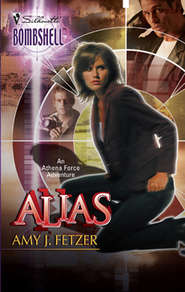По всем вопросам обращайтесь на: info@litportal.ru
(©) 2003-2025.
✖
Under His Protection
Автор
Год написания книги
2019
Настройки чтения
Размер шрифта
Высота строк
Поля
Quinn looked insulted. “What? No ‘thank you, Quinn, for the extra hours and being brilliant? For breaking a date with the cutest creature to walk in this town in six months?’”
“Oh, yeah, who?”
“Kate Holling. Lisa’s employee.”
Nash frowned. He didn’t remember the woman beyond blond hair and gold lipstick with dark liner. Kate didn’t seem like Quinn’s type. He usually went for the more exotic. “So was it worth the overtime?” He gestured to the lab.
Quinn flicked on all the lights and Nash winced at the fluorescent glare as the man moved to the coffeemaker and started a pot. “You could have been gracious and done this, you know.”
“With all these chemicals? I’d kill us.”
Quinn flipped the switch and faced him. “I found the exact cause and the method.”
“No kidding?”
Quinn slid a faintly insulted look to Nash, then said, “It wasn’t digitalis.”
“Good thing I didn’t quote you, then.”
“It was similar enough to be mistaken for causing heart failure, though.”
Impatient for coffee, Quinn pulled the pot out, shoved a cup under the drip, then reversed them. He sipped, making a face. “Field rations,” he murmured.
Quinn inclined his head, and the pair moved to the computer at the rear of the lab. The coroner tapped a few keys, calling up the results, and as they flicked and spread on the screen, he slipped into his lab coat.
“You owe my assistant Jarred for this. He’s the one who did a baseline for flowers.”
Flowers. Nash felt his heart slowly sinking to his stomach. Resigned, he settled into the neighboring chair and listened.
“The poison wasn’t ingested and here’s your murder weapon.” He dropped the evidence bag on the table in front of Nash.
Nash simply stared, feeling any hope drain away like rain down a gutter. It was the bath tea.
“That teabag in the hot water released the flower and herbal properties. Mostly the essential oils. Good for mood therapy and fragrance.”
“What was in it?”
“Lavender, rosemary.” Quinn met his gaze and added proudly, “Lily of the valley.”
“And?” Nash made a rolling motion for more.
“Convallaria majalis, better known as lily of the valley, is highly toxic, especially the leaves. Steeping it released the oils from the leaves, which are more toxic than the petals. The poison is a glycoside called convallatoxin, which works similarly to digitalis.”
“So you weren’t far off.”
Quinn snorted. Nash knew that wasn’t good enough for Quinn, in or out of the lab.
“All it has to do is seep into an orifice or a wound, and it starts working. Winfield had a couple of cuts on his back that look like scratches to me.” Quinn showed him pictures, pointing. “Other than that, the man had skin like a baby. If he dunked under the steaming water, got even a fraction of oil in his nose or mouth, he was as good as dead if he didn’t get help immediately.”
“Judging by the burned-down candles, I’d say he soaked for a while.”
“Didn’t have to,” Quinn said. “This works fast, and although dosage would be hard to judge, there was enough in that bath tea to kill him. He’d have felt too warm first, a headache, tense, instead of feeling relaxed. I imagine he stayed in the bath for a while, hoping that would go away, but in doing so, he just made it worse by giving the toxin more opportunity to get inside him.” Quinn tapped a spot on the pictures of Winfield’s body. “Remember the red patches? That’s part of the reaction, then hallucinations. He had dilated pupils, excess salivation—proved from the residue and stains—and then pop, heart failure.”
Вы ознакомились с фрагментом книги.
Приобретайте полный текст книги у нашего партнера:
Приобретайте полный текст книги у нашего партнера:











